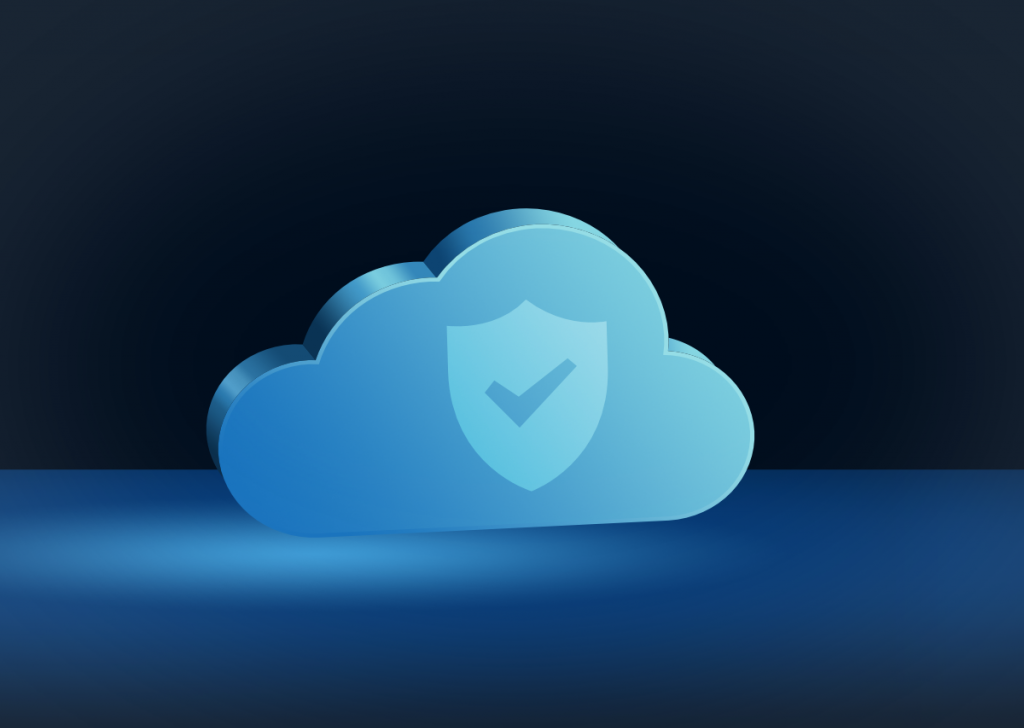Cloud computing has gained traction beyond all forecasts since the pandemic hit. According to Gartner, the total value of user spending on the public cloud services will cross US$ 482 billion in 2022. Every day, we come across companies across industries looking to shift their operations to the cloud.


Against this ever-expanding prevalence of the cloud, it is imperative to understand the need for greater responsibility in its use. But considering a strategic use of this technology, organizations must understand what they are trying to achieve with it before making the shift. Also, it is critical to discuss the pertinent security risks plaguing the cloud. Otherwise, all the good work in cloud adoption will come to nothing, or worse, lead to security disasters.
This article discusses security risks and also provides a response to the question ‘how secure is cloud computing?’.
How Secure is the Cloud?
It is only fair to question the security of the cloud before entrusting it with critical business data. Once you save something on the cloud, you do not have complete control over preventing unwanted access. So, the cloud provider has to inform you about any risks upfront, ensuring you understand the risks involved and take necessary measures to mitigate them.
So How Secure is Cloud Computing Really?
Today, hackers use a range of phishing emails and malware to get hold of sensitive information saved on your system disks offline. In addition, it is no herculean task for them to freeze your PC, delete data, or demand a ransom to unlock the same.
This is not as easy to do on the cloud though.
It is safe to say that data stored on the cloud is more secure than the data stored offline. Today, most cloud providers undertake the highest levels of security protocols, such as HIPAA, SOC 2, GDPR, etc. to ensure that your data remains safe and secure.
What is Data Security in Cloud Computing?


The range of robust tools deployed by modern cloud providers ensures the highest level of protection against any unwanted access, both from outsiders and insiders. Data security in cloud computing refers to deploying tools and technologies that augment the organizational visibility of critical data – where it resides, who has access, and how it is used.
Data security focuses on practices, policies, and principles that help safeguard data and information on the cloud network. Its primary areas of focus include
- Data integrity
- Data availability
- Confidentiality
What are the security risks of cloud computing?
Since the second half of 2020, 79% of enterprises have been hit by at least one cloud data breach.
Here are the top five security risks plaguing the cloud computing landscape:
1. Limited Visibility Into Network Operations
When shifting your data from one source to another, you also transfer the responsibility of managing a part of it from your in-house team to the CSP (cloud service provider). Unless you know what you are doing, it can lead to a loss of visibility into your resources, leading to an increase in service usage and costs.
This is why there is a need to discuss the protocols upfront and ensure optimum transparency throughout the transfer process.
2. Malware
About 90% of organizations moving to the cloud are more likely to experience data breaches.
Cloud computing partners have tried to build in all the major security protocols to keep your data safe. But cybercriminals have upped their game too! They have familiarised themselves with these modern technologies. As a result, they are now capable of bypassing the majority of these standards and accessing sensitive user information with ease.
3. Compliance
Cloud computing is scaling at a trailblazing speed. While it has helped organizations shift from offline systems faster, it has also raised the necessary questions on compliance. So, you must ensure that data access and storage needs across your PII (Personally Identifiable Information) are matched by the cloud computing provider with the requisite privacy and security rules.
4. Data loss
In a survey, 64% of respondents reported data loss/leakage as their biggest cloud security concern.
With brands shifting a part of their control to the CSP, they also allow their data to be more vulnerable. For example, if there is a data breach in the cloud computing provider’s space, the chances of your enterprise’s sensitive data landing in the wrong hands increase manifold.
5. Inadequate Due Diligence
Due diligence helps understand the efforts an enterprise needs to put in to transfer its data to the cloud. Often, we come across companies that overlook or are not stringent enough in understanding how much work is necessary for
- a smooth transition process, and
- steps taken by the cloud computing provider to ensure the same
How to Bolster Security in Cloud Computing?
There is a need for mutual understanding and partnership among enterprises and cloud providers to ensure optimum cloud computing security and safety of data onboard. Here are some ways in which they can bolster the same:
Risk Assessments
Carrying out a risk assessment involves conducting an audit of your cloud architecture. It helps understand the capabilities of the security controls deployed and how efficiently they are operating presently. It enables the teams involved to figure out gaps and make requisite decisions to fill them.
User Access Controls
Given that the cloud ecosystem is easier to access, it is imperative for enterprises to establish stringent user access controls. User access controls are necessary to safeguard sensitive leakage by insiders. Access to critical functions should be given to only a handful of individuals to keep the data safe from unauthorized eyes.
Automation
Enterprises need to automate critical initiatives, including real-time monitoring, vendor risk assessments, and more. This would enable the IT department to monitor essential functions, instead of being slowed down with a slew of unwanted, repetitive tasks.
Continuous Monitoring
Continuous monitoring is one of the essential functions of the current cloud ecosystem. With the cloud becoming more vulnerable and cybercriminals finding newer ways to breach it, you must loop in real-time assessment to ensure your data remains safe.
Let Cloudlytics Take Care of Your Cloud Security Risks
Given that the cloud computing landscape is a highly dynamic ecosystem, you must have a robust architecture to manage its use. Cloudlytics can be exactly that partner for you.
At Cloudlytics, we specialize in providing real-time visibility into all your data on the cloud. We support integration with all the major cloud providers and offer scalable solutions, such as a compliance manager, which can help you mitigate varied cloud computing risks.
Never fear security threats to the cloud! Explore our range of services today.
Also Read:



